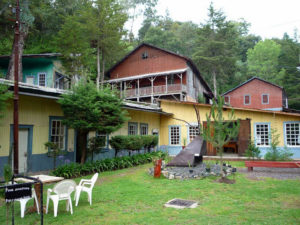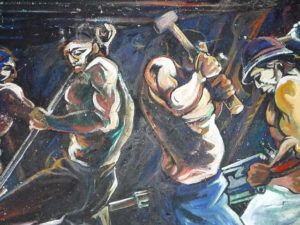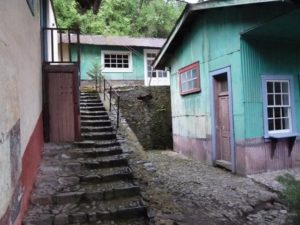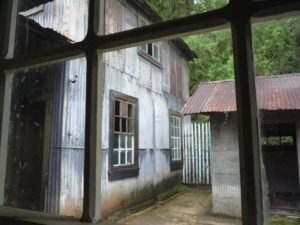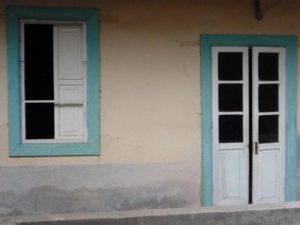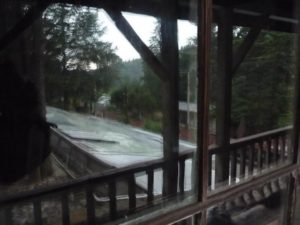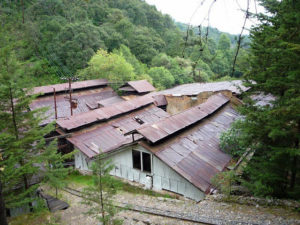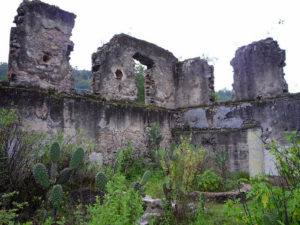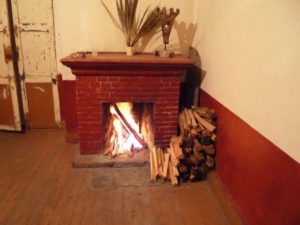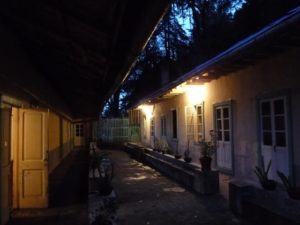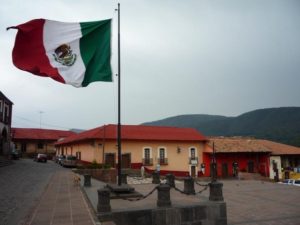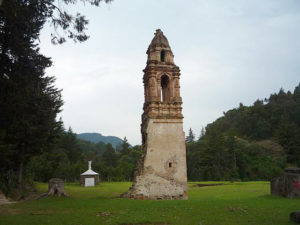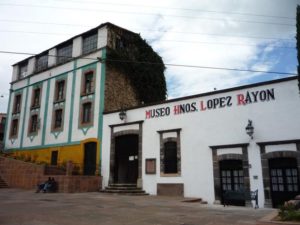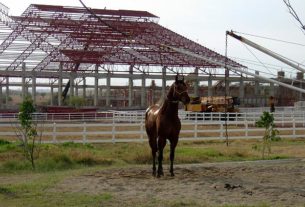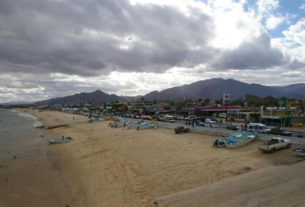The proverbial bat in the belfry, a boy trapped in a bathroom, and a witching hour wander deep into the heart of a century old tunnel provided the eerie highlights of my recent overnighter at Mina Dos Estrellas, not far from Tlalpujahua in northeastern Michoacan (see map). Yet one resident phantom, reputed to be a child that flits past windows and sometimes seeks a cold embrace, was regrettably missing from the action.
The Dos Estrellas (Two Stars) mine has had a long and checkered history. It was a fabled producer of gold and silver in a region that was the early stomping ground of the man whose touch in the 18th century turned everything to, if not gold, silver — Jose de la Borda.
Then one night more than 70 years ago, the god of an underground commerce that had been vigorously worked since Prehispanic times vented its wrath, unleashing a tragedy on those who made a living from its veins.
Brought to its greatest heights by the Frenchman F.J. Fournier at the turn of the 20th century, the Dos Estrellas ultimately went the way of its predecessors in 1959 — a victim of diminishing returns and fluctuating markets.
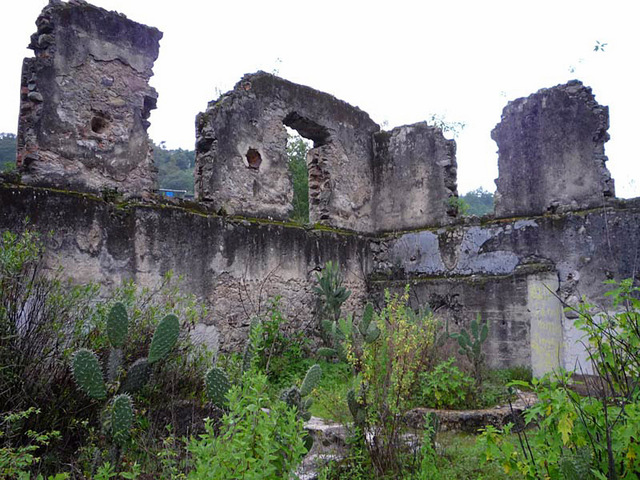
Today assorted machinery lies rusting at the site, which has been converted into a museum. The once technologically vaunted processing mills, refining stations and purification plants that teemed with serious men and activity now slowly succumb to the elements in the surrounding forest.
I came to the mine as a guest of a friend, Eduardo Anguiano, whose brother Salvador is the official photographer for the Museo Technologico Minero, and its curator, resident muralist and ostensible owner, Don Gustavo Bernal Navarro.
The museum is open to the public during normal operating hours, and it’s free. Exploring the mine’s main tunnel is a must for all visitors and it’s an interesting experience during the day, to be sure — but at midnight… well, that’s another thing.
Salvador and his wife, Mari, had already arrived at Dos Estrellas from their home base in Morelia when Eduardo and I got there after a two and a half hour drive from Mexico City. They’d brought their sons and several of their sons’ friends along for the fun. We settled in the rooms of the former Mine Superintendent’s Office. The gates closed at 5 p.m. and then we had the Dos Estrellas to ourselves.
One boy paid a visit to the bathroom across from our rooms. He entered and closed the door. When he tried to leave, the door would not open. After some time, his cries were heard by somebody (we were all scattered across the mine’s environs exploring in twos and threes). Sure enough, the door was stuck. In fact, it seemed to be locked.
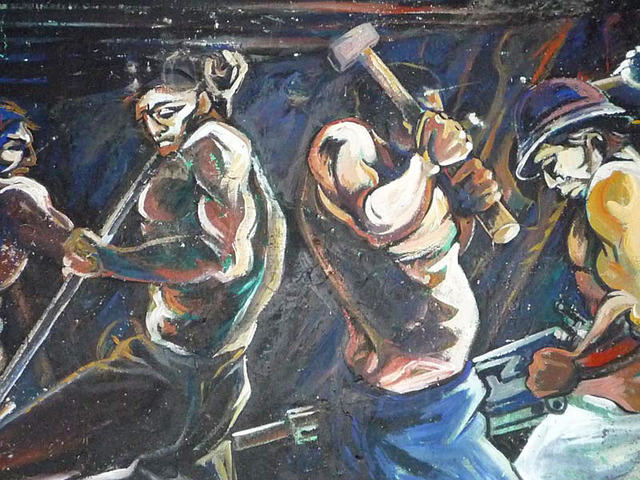
After an hour of fruitless effort, Salvador contacted Don Gustavo, who drove over from Tlalpujahua with a set of keys for every room in the complex, including a skeleton key — and none of them opened that door. Finally, five or six spirited kicks brought the door down. It was the only way to get the kid out.
Don Gustavo was mystified.
Later in the evening we discovered that a room we’d earlier explored housed a bat. This creature, quite frankly, is one of nature’s more grotesque productions, and the sight of it suitably grossed everyone out. Like some glistening rat embryo, it hung suspended from a corner, when suddenly it shot off at us, wings nightmarishly spread. A brief episode of pandemonium ensued as we escaped its manic swoops.
The midnight tour of the tunnel by torchlight, along with explorations of the surrounding ore processing buildings well into the early hours of the morning, was an uncanny experience in its own right — even if no phantoms were encountered.
Yet the Dos Estrellas was once featured on the hit MTV reality program MTV’s Fear a few years ago and gained considerable notoriety at the time. The show’s premise was that half a dozen contestants spend two nights in an apparently haunted location and complete a series of dares. The Dos Estrellas holds the distinction of being the only location used twice, since the group partaking in the first episode abandoned their stay claiming that the spiritual energy was “too dangerous.” It was the only episode in the history of the show in which every team member quit. When the second episode was filmed at the mine, half that team also quit midway though production.
Tlalpujahua
Nearby Tlalpujahua was named a Pueblo Mágico in 2005. The designation refers to an initiative developed by the Secretariat of Tourism to confer “magical village” status on those places with “legends, history, important events… magic in its social and cultural manifestations.”
Here one may visit the Museum of Mineralogy and History and the Lopez Rayon Brothers Museum, along with historic 16th and 17th century churches. The town is quaint enough yet it, too, relies on its reputation as a haunted locale favored by ghostbusters.
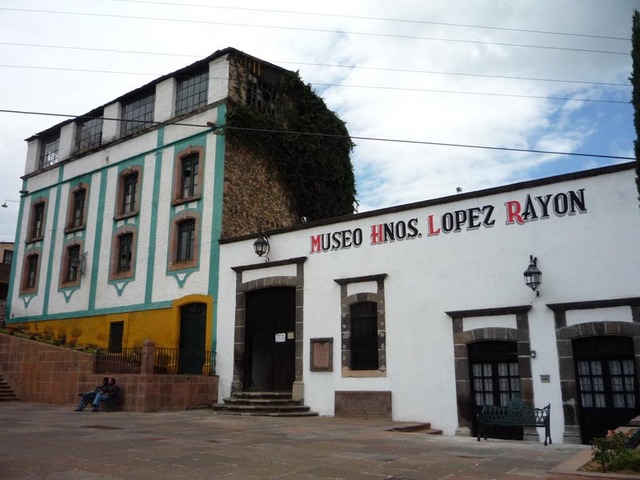
Fantastic legends abound in the environs of Tlalpujahua; many of them stem from a catastrophe that occurred here in 1937 — inextricably linked with the Dos Estrellas — when a dam containing mineral waste (a slag heap, basically) broke and buried a segment of the town, killing more than 300 people. Tales arose of ghosts roaming former streets destroyed by mud and debris, seeking earthbound relatives to tell them where their savings could be found.
Today the almost entirely buried remains of a church, known colloquially as the “Iglesia Enterrada,” can be visited just outside Tlalpujahua in a clearing in the forest. It is a haunting, surreal sight; a small cemetery inhabits the woods nearby.
A serial killer once lived in the town in the 1970s. Mexican horror movies by the Galindo brothers including Pánico en la Montaña and Trampa Infernal were filmed here in the 1980s; and in 2008 the inaugural Mórbido: Festival Internacional de Cine Fantástico y de Terror was staged at the local Cine Obrero.
Now The Family — a drugs cartel that recently emerged from President Felipe Calderon’s home state to lay waste to its once benign reputation — is the embodiment of fear around these parts.
Balaclava-clad soldiers riding shotgun on jeeps rumbling through the streets of Tlalpujahua can instill a slight sense of unease. Accordingly, the Morbido brains trust has canceled Tlalpujahua as its venue this year. They’re taking the festival to Mexico City — calculating that it’s a safer bet than this little town of 18,000 souls nestled in the hills of Michoacan! Of course, if one forever obsessed over the security situation in Mexico, tourism would become a ghost of the past, too.

